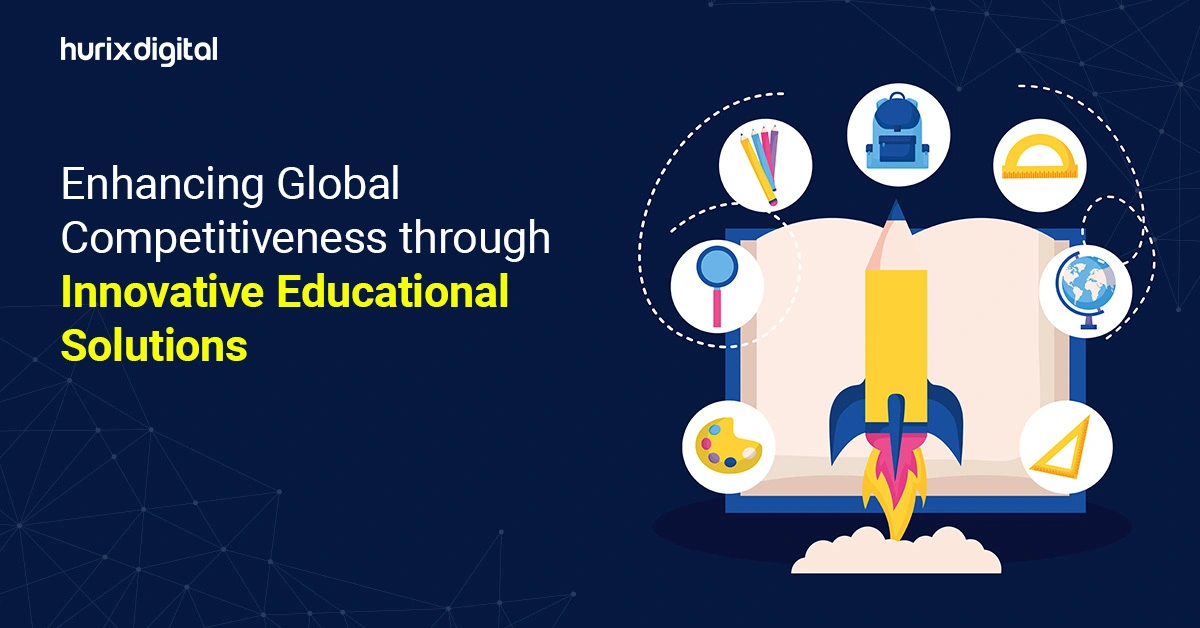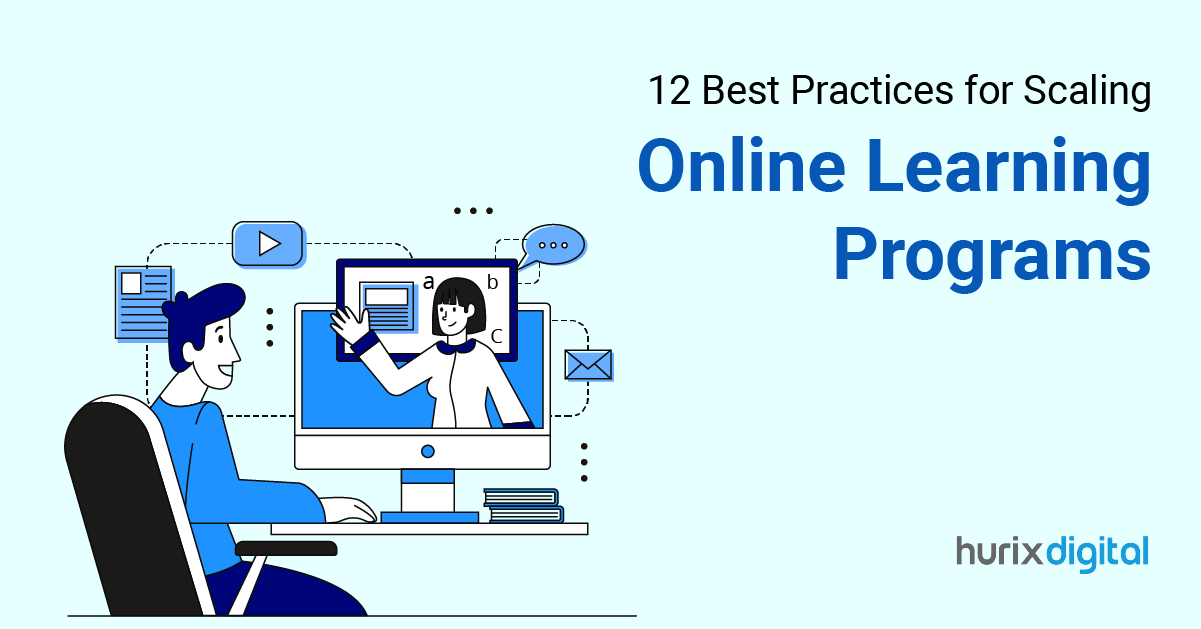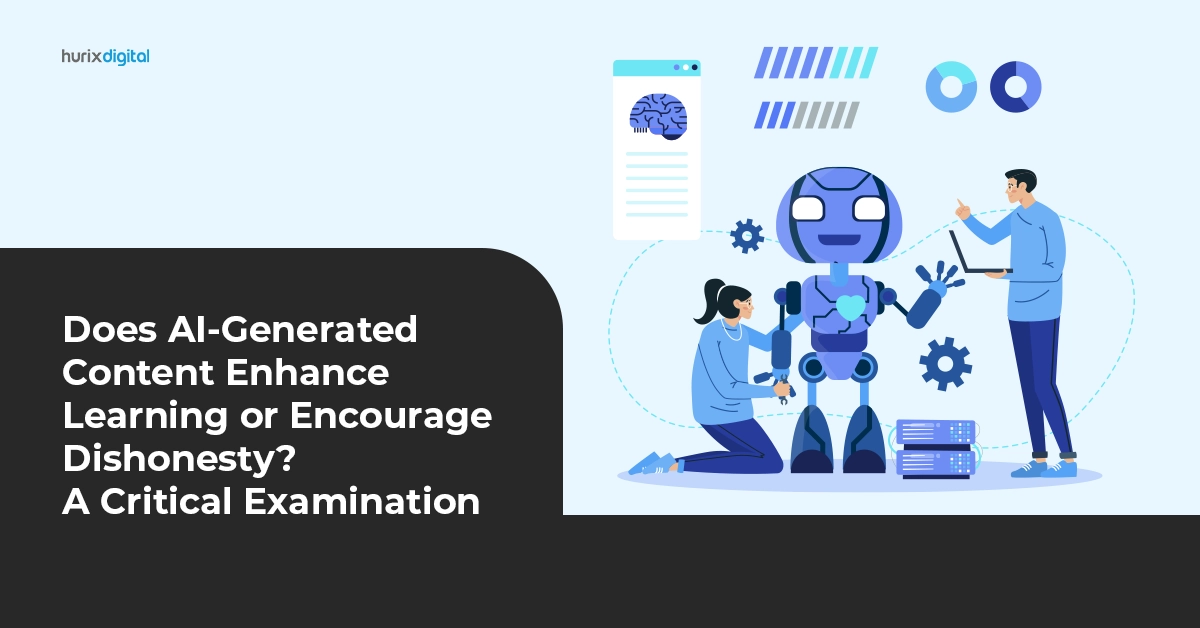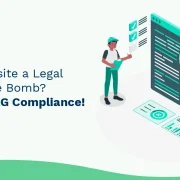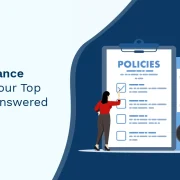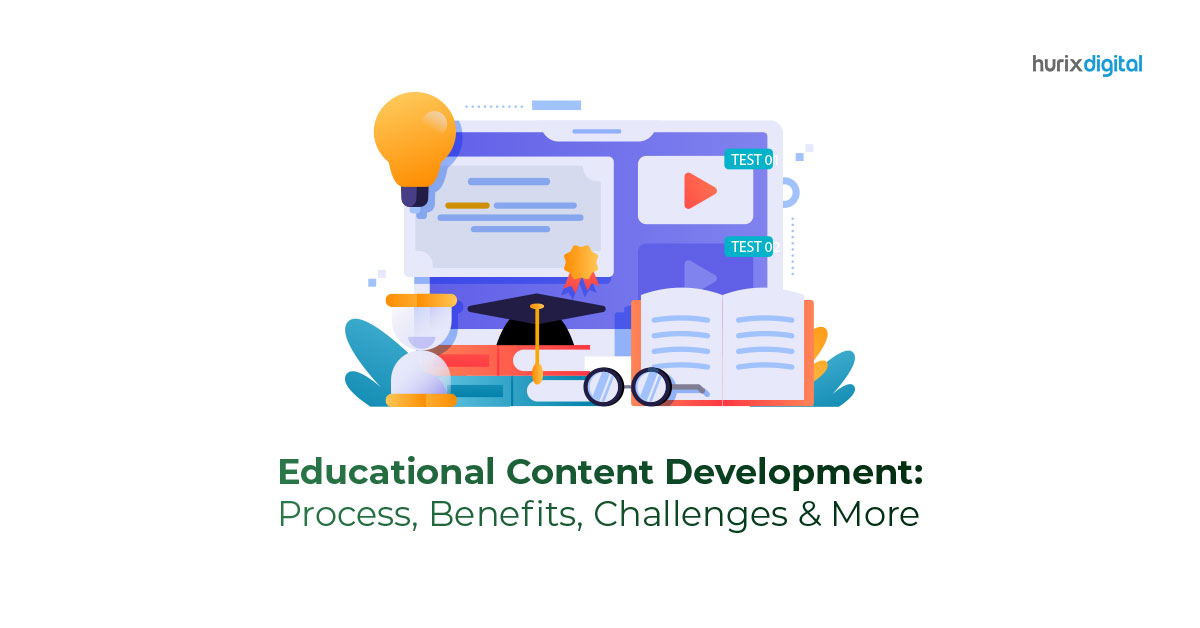
Educational Content Development: Process, Benefits, Challenges & More
Be it global digitization, after effects of the pandemic, or simply students seeking convenience, e-learning is growing tremendously.
The industry is expected to amass a global value of 325 billion dollars by 2025. Academic institutes across the world have started noticing the benefits of educational content development.
Since e-learning’s demand is surging endlessly, educational content development has become pivotal. The process revolves around ideating, creating, and producing educational resources to boost academia.
The content can be shared in different formats, such as audio, text, video, assessment, etc. Despite its popularity, many learners still lack an understanding of the process.
That is why the article will shed light on the process of content development, its benefits, challenges, and more.
Table of Contents:
- Why is Educational Content Developed?
- The Process of Educational Content Development
- Developing the Content
- Benefits of Educational Content Development
- Challenges in Educational Content Development
- In Conclusion
Why is Educational Content Developed?
Before delving into the challenges in educational content development, let’s understand its importance.
Content development aims to facilitate engaging and relevant learning materials for students. With 73% of students preferring online learning, it has become crucial for institutions to address the demand.
While educational content maintains relevancy for years, its creation can be highly complicated. That is why learning development professionals are turning to modern, technology-driven, online teaching solutions.
The Process of Educational Content Development
Here is an overview of how the content development process takes place:
Laying a Roadmap
The process starts with establishing a plan for the upcoming steps. Since educational content differentiates vastly in terms of resources, time required, expertise, etc., it is important to address these sections before starting.
- Define the requirements
- Establish the learner persona
- Acquire the experts
- Set a deadline
Developing the Content
After setting the basics down, it is time to create the core content.
Ask your writers to study the requirements and learner personas to gauge an idea of the content. One of the prime benefits of educational content development is the process can be replicated.
Even then, you should focus on adding relevant data while maintaining high-quality content. The best way to ensure it is by performing multiple revisions. Make sure to include these checkpoints in the QA process:
-
Calibration Round
The step ensures that the content you are about to develop will meet the end-users needs. It involves creating a portion of the content and getting it approved by the learners/clients before completing the course.
-
Editor Review
One of the biggest challenges in content development is meeting guidelines. That is why you should use a developmental editor who can review the content.
The editor’s job is to ensure the content remains bias-free and meets every guideline. In case revisions are needed, the editor will collaborate with the writers to make the adjustments.
-
Manager Review
Once the editor reviews the content, it is shared with a subject matter expert. The expert examines the editor’s feedback and the content to maintain quality and consistency. If the content is good to go, the process moves forward.
However, if more revisions are needed, the manager delivers feedback to the writers.
-
Revisions
The writers work on the feedback shared by the manager and share it with the editor. The progress continues until the expert approves the content.
-
Copyediting
The final step of the QA process is copyediting. In this stage, the copyeditor proofreads and edits the content to meet the end users’ needs.
Benefits of Educational Content Development
Here are some of the benefits of educational content development:
-
Improves the Learning Curve
An extensive content development process improves the overall learning experience. It ensures that the learners engagingly receive reliable information.
-
Adds a Personal Touch
Given the supremacy of content development tools, it is now possible to curate personalized curriculums. These tools can help teachers provide students with the most suitable learning method based on their tendencies.
-
Saves Time and Cost
Investing time and resources in developing educational content enables long-term benefits. Since the course and its content rarely change, you can reuse the existing template with minor modifications for years.
Even better, institutions can use content development tools to automate the entire process.
-
Scope for Scalability
With the globalization of education, even social media platforms like YouTube are offering viable learning experiences. Thus, an accurately created online course or curriculum can easily be scaled for a global audience.
It can be immensely useful in distanced and self-paced learning.
-
Use of Multimedia
The modern educational content development process can get multimedia aid for intuitively teaching students.
Interactive elements, like images, videos, and even music, can be used in the content to appeal to a wider audience. In addition, they make the learning sessions more entertaining.
Challenges in Educational Content Development
Now, it is time to learn about some challenges in educational content development:
-
Learner’s Challenge
Finding the target group is a challenging task in education, given the sheer number and diversity of learners and content available in the market. Thus, writers find it difficult to pinpoint the learner’s persona during educational content development.
-
Regulation Compliance
Despite meeting the student’s needs, institutes encounter challenges while meeting regulatory compliances. Since the academic domain is rigid, institutes must involve subject experts and course coordinators to ensure their content meets every need.
-
Cultural Challenges
One of the biggest challenges in content development is catering to a wide audience without losing touch. A course curated for learners in Asia can vastly differentiate in culture from students in America. Thus, institutes must make necessary edits to keep the content relevant across different regions.
In Conclusion
Educational content development plays a crucial role in modern society, given the increasing demand for e-learning. That is why writers, teachers, and academic institutes make immense efforts to ensure their content remains relevant and precise.
While there are many benefits of educational content development, it boasts several challenges too. This is where expert online learning platforms, like Hurix, come into play. Our education content development tools and advice can help you curate the best course possible.
Schedule a call with our experts to learn more about the services today.
Also Read – Top 7 Companies Providing Educational Content Development Services

Performance, Results, Growth, and Life-Long Learning define my professional life. I am passionate about making workplace learning planful, purposeful, and impactful. I take pride in partnering with clients and bringing them the best in learning design and creating solutions that address business challenges.

